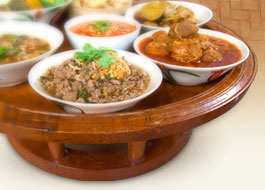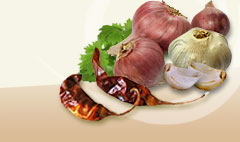|
Khao nueng is a staple food for Lanna people. It is glutinous rice grains soaked to soften them 2-3 hours or overnight and then steamed until well cooked to be eaten with all kinds of food 3 meals a day. It can be kept warm all day if put in a thermos bucket lined with a piece of white cloth. (Nongyao Wiriya, personal communication, July 3, 2007) |




